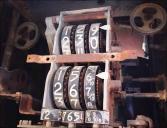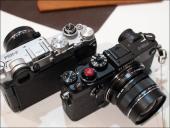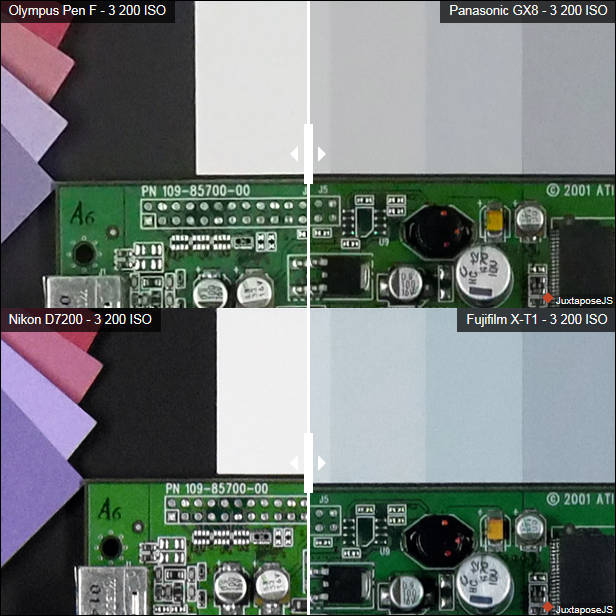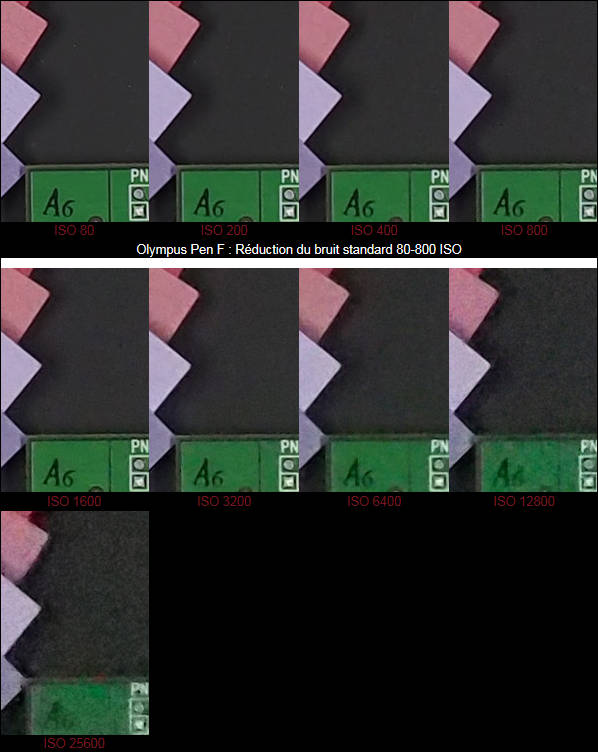
-

 zebra834.jpg800 x 586 - 82K
zebra834.jpg800 x 586 - 82K -

 zebra835.jpg800 x 602 - 93K
zebra835.jpg800 x 602 - 93K -
It will be interesting to see how sales of the PEN-F compare with those of Panasonic’s Lumix DMC-GX8. It is after all very similar in terms of key specification – probably the same sensor, enhanced touch functions including touch-pad AF, the same viewfinder position (minus the articulation) and the same lens range to choose from. In fact, the bodies are so astonishingly similar that the PEN-F looks more like a stylish adaptation, or a flattering imitator, than a competitor – but to my eye at least the PEN, with its contours, layers and more rounded feel takes the beauty pageant rosette. The designers have done a great job.
http://www.dpreview.com/opinion/9256567720/design-looks-and-desire-olympus-does-it-again
-

 zebra839.jpg800 x 613 - 79K
zebra839.jpg800 x 613 - 79K -
Even if video features are not well implemented here (or not implemented at all) I see the new picture control feature like a very interesting and potentially powerful tool for low.budget works when you need (or want) to make "in-camera-grading". It is very liberating when you get (more or less) the look you want on stage....less time editing, and less postproduction / grading with these thin 8bit images, which translates in less banding/noise/artefacts problems. Video recording in these devices is like "jpegPhotography" somehow.... I still use the first em-5 in some of this type of works only because of stabilization and the ability to tweek the profiles with the s-curve, so I can imagine a lot more "space" to play with this custom picture profiles, specially the black and white one. (but I still don´t know if this is even possible in movie mode). Sometimes (for me) the best grading is the one that I don´t need to do at all, and working with log profiles I feel creatively more constrained than liberated...it is a paradox
-

 img1.jpg795 x 597 - 72K
img1.jpg795 x 597 - 72K -

 img59.jpg800 x 595 - 90K
img59.jpg800 x 595 - 90K -

 img78.jpg800 x 591 - 57K
img78.jpg800 x 591 - 57K -

 img79.jpg800 x 1106 - 279K
img79.jpg800 x 1106 - 279K -

 img83.jpg800 x 525 - 75K
img83.jpg800 x 525 - 75K -

On the base of the camera, the tripod socket is right up at the edge below the lens mount. Given that there's not much space between the lens mount and the base of the camera, the placement of the tripod socket can make it difficult or nearly impossible to mount larger lenses, such as the 12-40mm or 7-14mm Zuiko PRO lenses for instance, while a tripod plate is attached. Smaller diameter lenses, like a number of their compact primes, work just fine with tripod plates, as they don't encroach below the edge of the camera.
http://www.imaging-resource.com/PRODS/olympus-pen-f/olympus-pen-f-field-test.htm

 img86.jpg800 x 589 - 127K
img86.jpg800 x 589 - 127K -

 img91.jpg800 x 608 - 60K
img91.jpg800 x 608 - 60K -
The entire design concept behind the PEN-F is aimed at JPEG shooters who are active on social media. There's nothing wrong with this as it enables a traditionally-styled camera to meet the needs of the modern user.
The addition of a decent EVF, which is built into the camera (rather than offered as an add-on) makes the PEN-F the first ‘serious’ camera in the PEN range. Hitherto, PEN cameras have been essentially snapshooters' cameras, albeit at a 'prestige' level.
http://www.photoreview.com.au/reviews/advanced-compact-cameras/interchangeable-lens/olympus-pen-f
-

 img195.jpg800 x 597 - 60K
img195.jpg800 x 597 - 60K -
This strange front wheel...
-

 img214.jpg800 x 506 - 62K
img214.jpg800 x 506 - 62K
Howdy, Stranger!
It looks like you're new here. If you want to get involved, click one of these buttons!
Categories
- Topics List23,993
- Blog5,725
- General and News1,354
- Hacks and Patches1,153
- ↳ Top Settings33
- ↳ Beginners256
- ↳ Archives402
- ↳ Hacks News and Development56
- Cameras2,368
- ↳ Panasonic995
- ↳ Canon118
- ↳ Sony156
- ↳ Nikon96
- ↳ Pentax and Samsung70
- ↳ Olympus and Fujifilm102
- ↳ Compacts and Camcorders300
- ↳ Smartphones for video97
- ↳ Pro Video Cameras191
- ↳ BlackMagic and other raw cameras116
- Skill1,960
- ↳ Business and distribution66
- ↳ Preparation, scripts and legal38
- ↳ Art149
- ↳ Import, Convert, Exporting291
- ↳ Editors191
- ↳ Effects and stunts115
- ↳ Color grading197
- ↳ Sound and Music280
- ↳ Lighting96
- ↳ Software and storage tips266
- Gear5,420
- ↳ Filters, Adapters, Matte boxes344
- ↳ Lenses1,582
- ↳ Follow focus and gears93
- ↳ Sound499
- ↳ Lighting gear314
- ↳ Camera movement230
- ↳ Gimbals and copters302
- ↳ Rigs and related stuff273
- ↳ Power solutions83
- ↳ Monitors and viewfinders340
- ↳ Tripods and fluid heads139
- ↳ Storage286
- ↳ Computers and studio gear560
- ↳ VR and 3D248
- Showcase1,859
- Marketplace2,834
- Offtopic1,320
Tags in Topic
- olympus 121




















